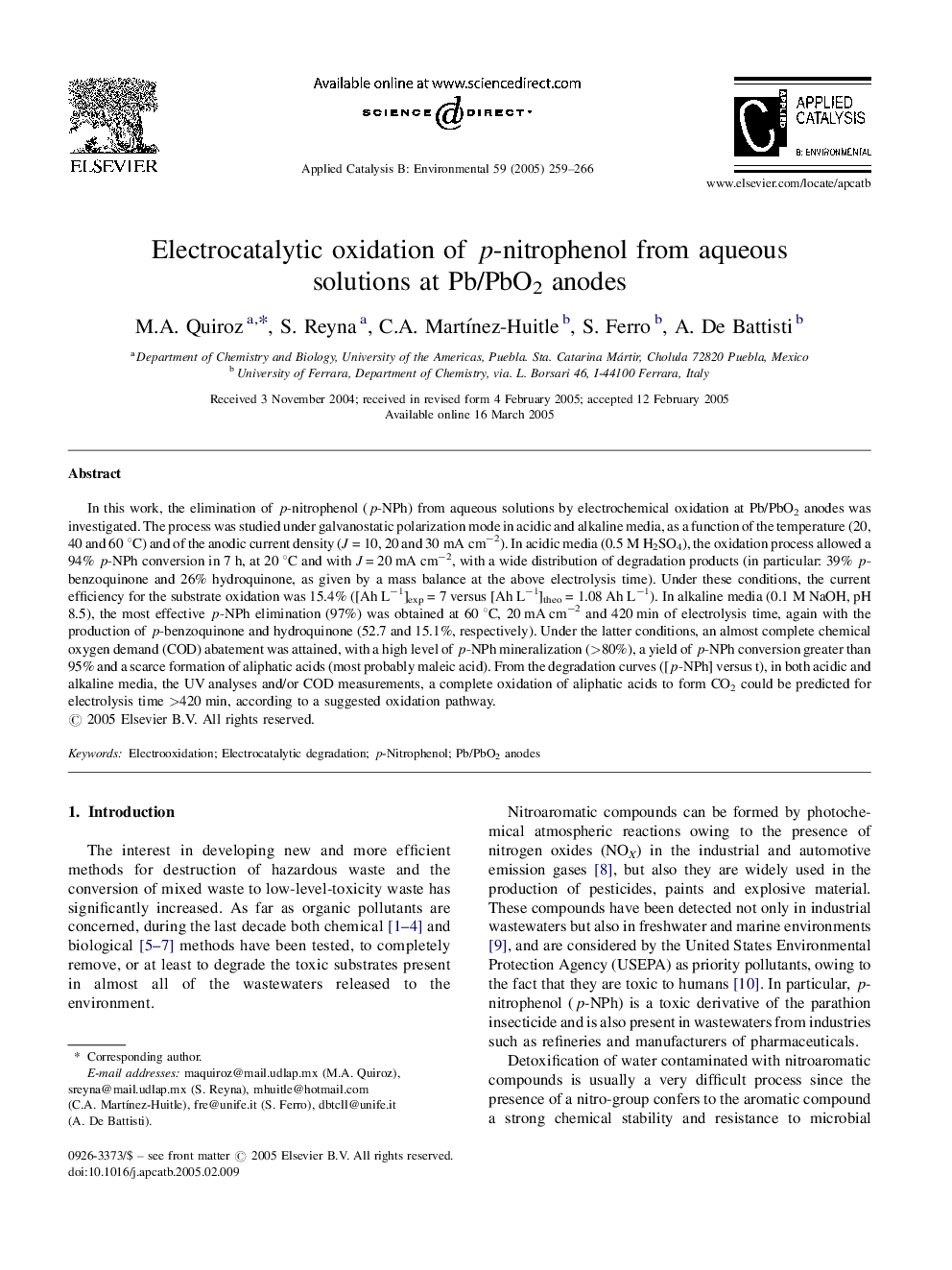| Article ID | Journal | Published Year | Pages | File Type |
|---|---|---|---|---|
| 9609854 | Applied Catalysis B: Environmental | 2005 | 8 Pages |
Abstract
In this work, the elimination of p-nitrophenol (p-NPh) from aqueous solutions by electrochemical oxidation at Pb/PbO2 anodes was investigated. The process was studied under galvanostatic polarization mode in acidic and alkaline media, as a function of the temperature (20, 40 and 60 °C) and of the anodic current density (J = 10, 20 and 30 mA cmâ2). In acidic media (0.5 M H2SO4), the oxidation process allowed a 94% p-NPh conversion in 7 h, at 20 °C and with J = 20 mA cmâ2, with a wide distribution of degradation products (in particular: 39% p-benzoquinone and 26% hydroquinone, as given by a mass balance at the above electrolysis time). Under these conditions, the current efficiency for the substrate oxidation was 15.4% ([Ah Lâ1]exp = 7 versus [Ah Lâ1]theo = 1.08 Ah Lâ1). In alkaline media (0.1 M NaOH, pH 8.5), the most effective p-NPh elimination (97%) was obtained at 60 °C, 20 mA cmâ2 and 420 min of electrolysis time, again with the production of p-benzoquinone and hydroquinone (52.7 and 15.1%, respectively). Under the latter conditions, an almost complete chemical oxygen demand (COD) abatement was attained, with a high level of p-NPh mineralization (>80%), a yield of p-NPh conversion greater than 95% and a scarce formation of aliphatic acids (most probably maleic acid). From the degradation curves ([p-NPh] versus t), in both acidic and alkaline media, the UV analyses and/or COD measurements, a complete oxidation of aliphatic acids to form CO2 could be predicted for electrolysis time >420 min, according to a suggested oxidation pathway.
Related Topics
Physical Sciences and Engineering
Chemical Engineering
Catalysis
Authors
M.A. Quiroz, S. Reyna, C.A. MartÃnez-Huitle, S. Ferro, A. De Battisti,
